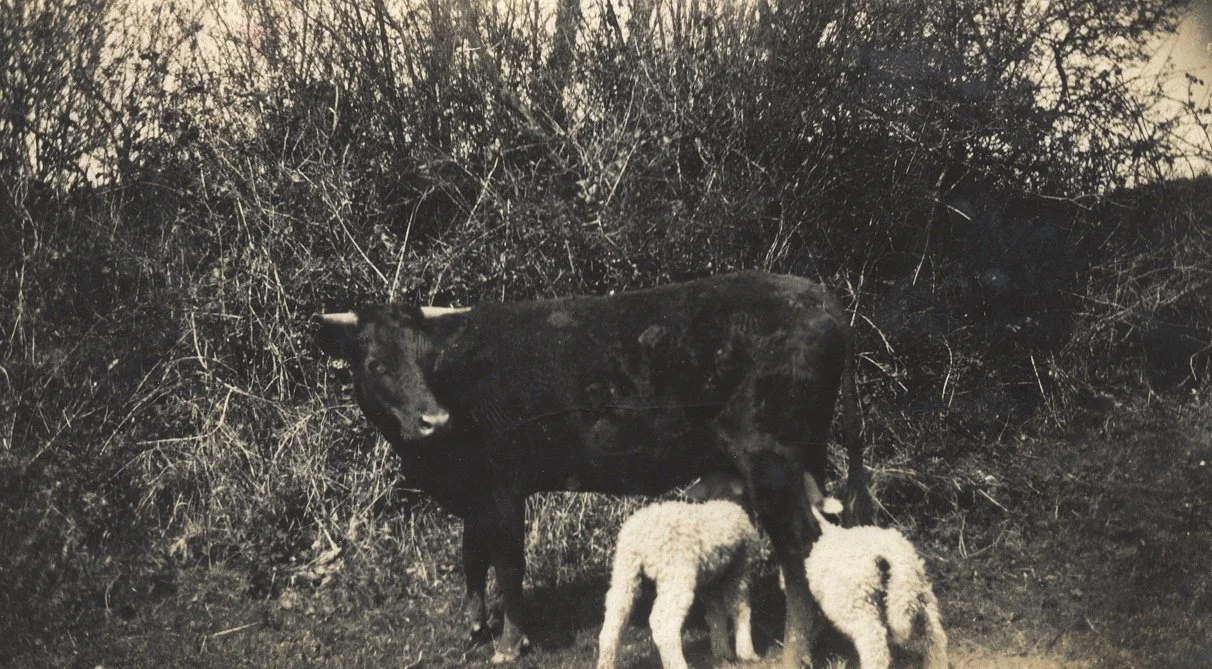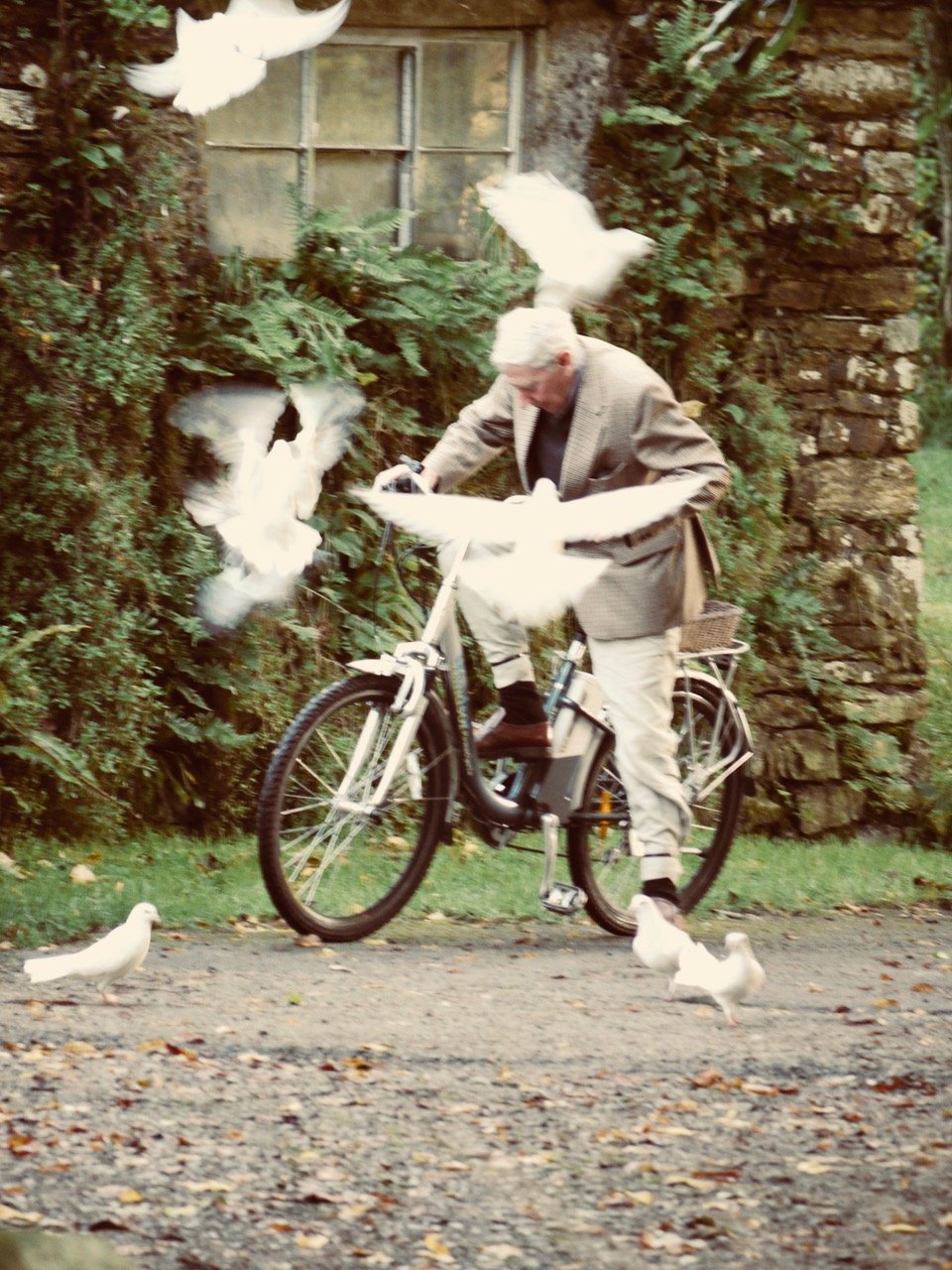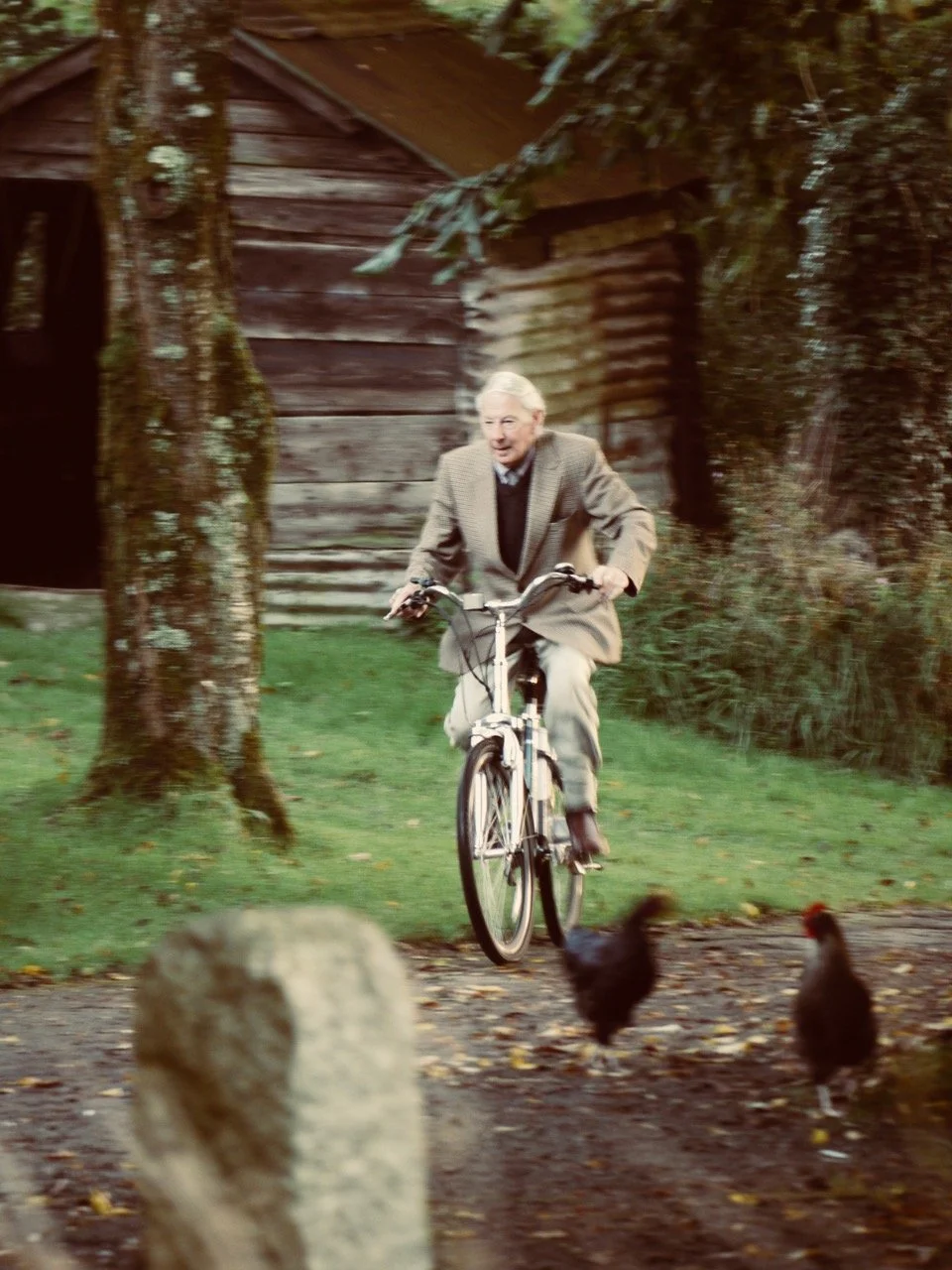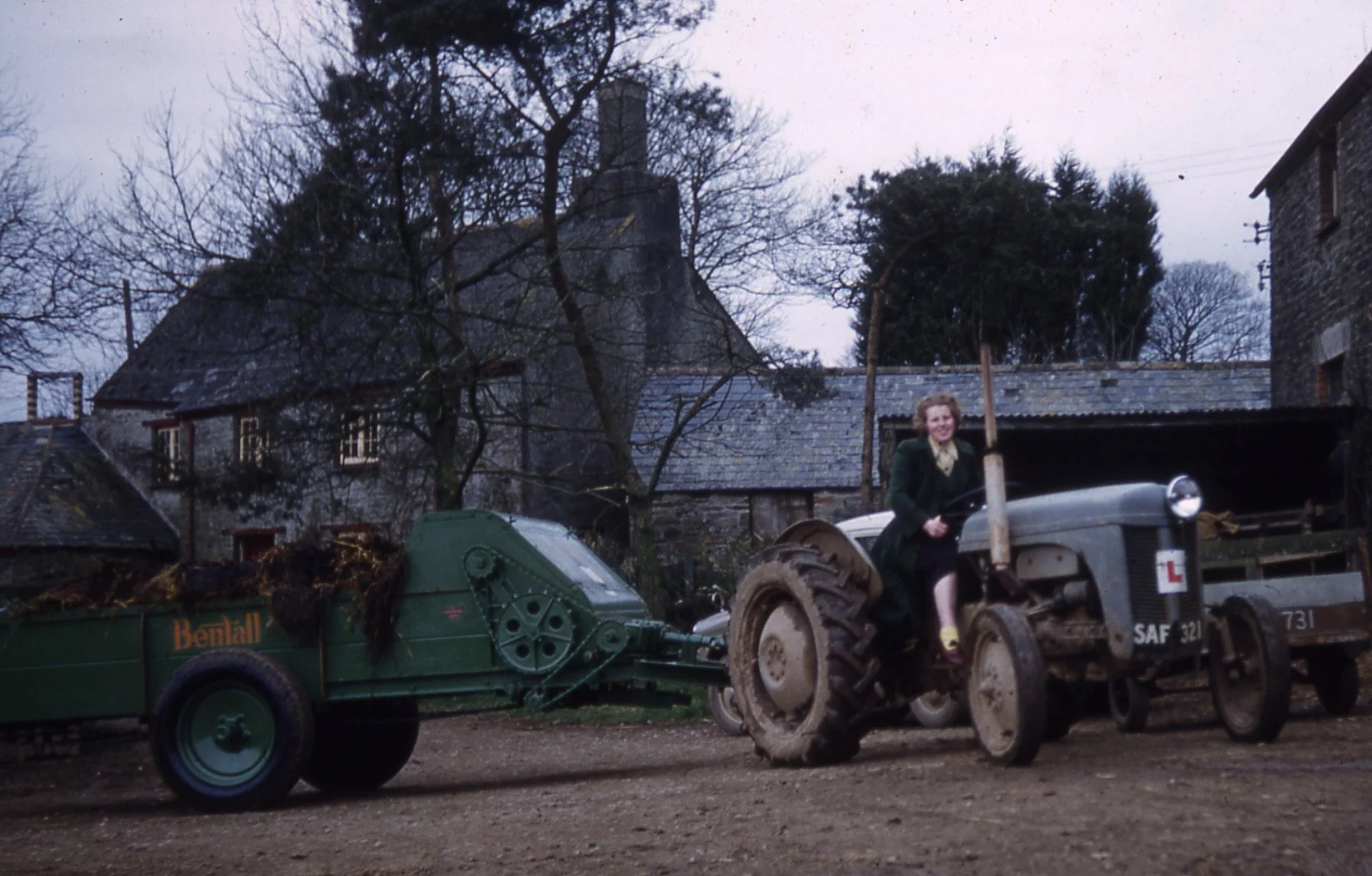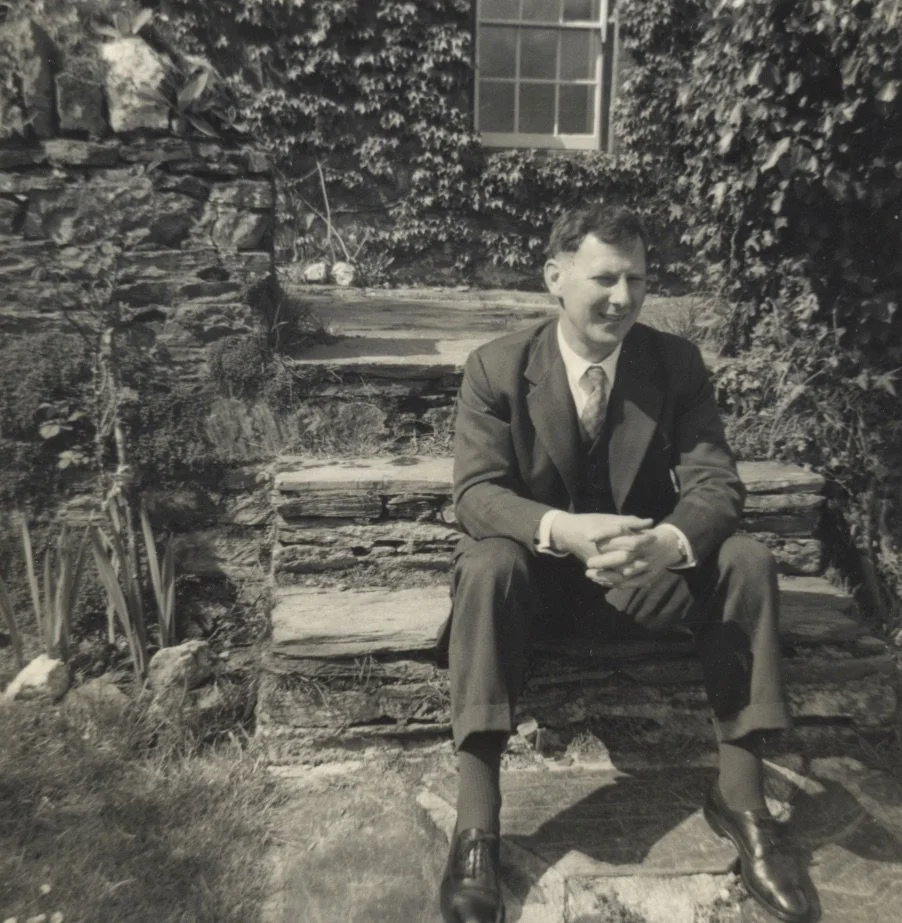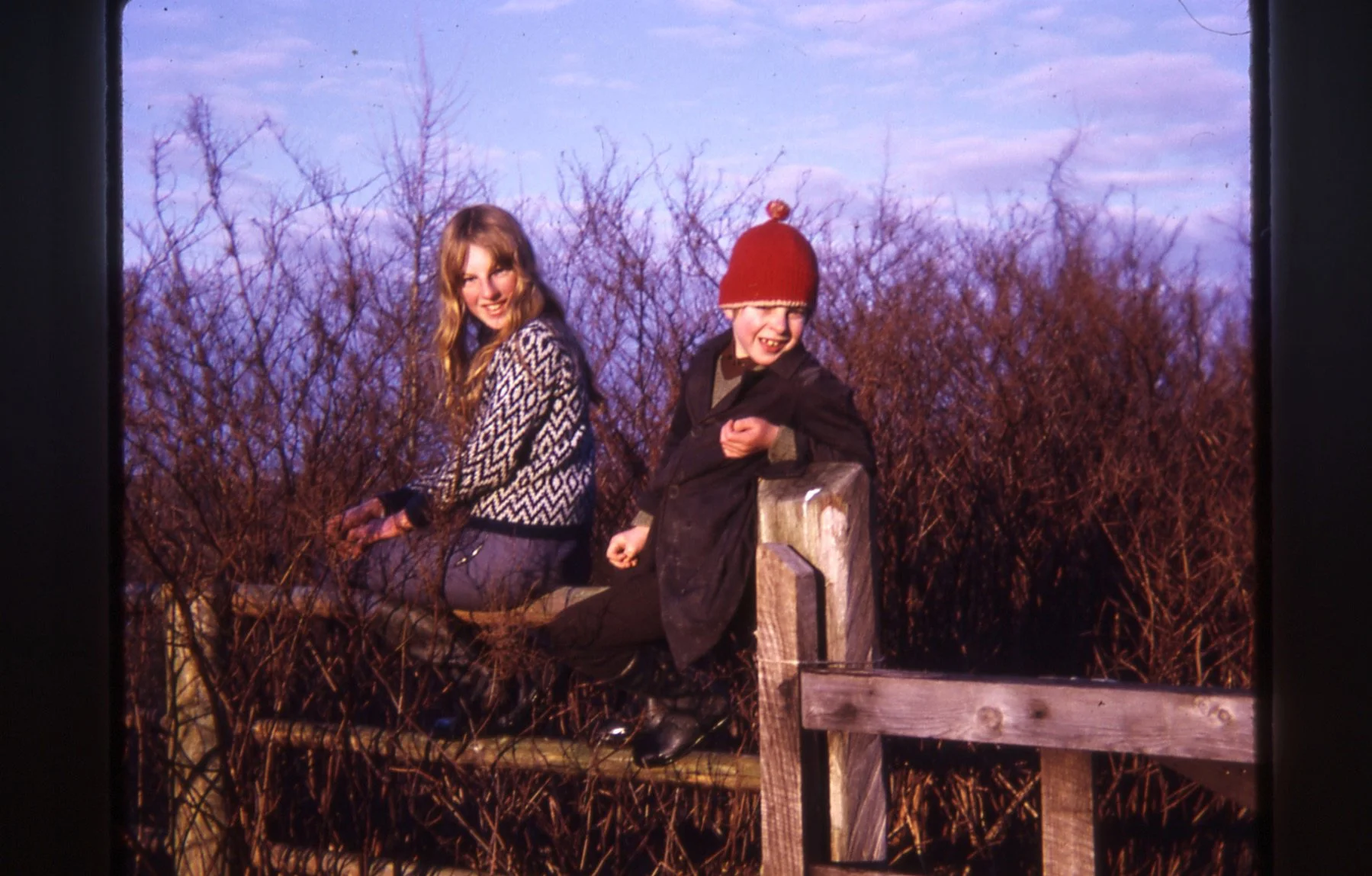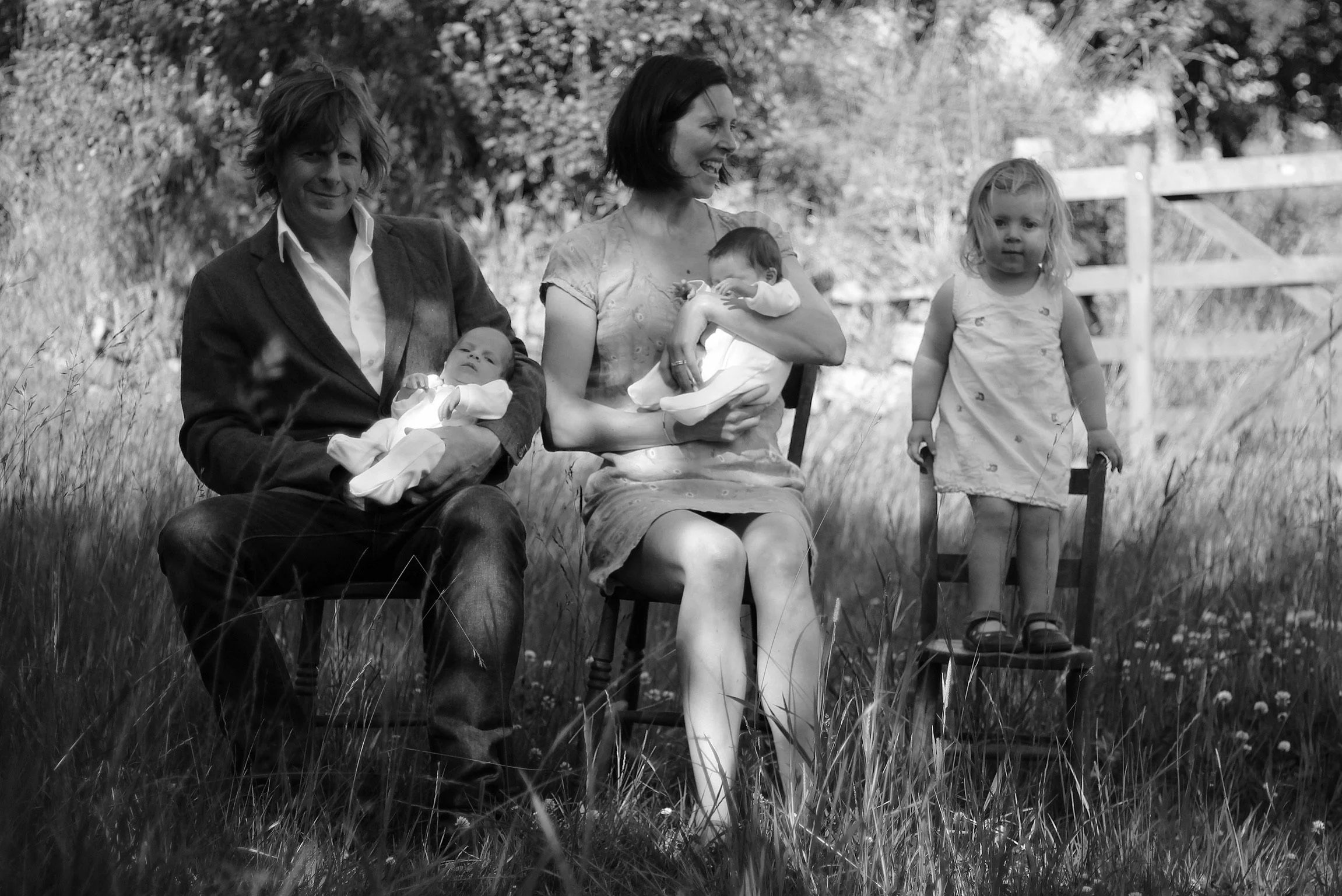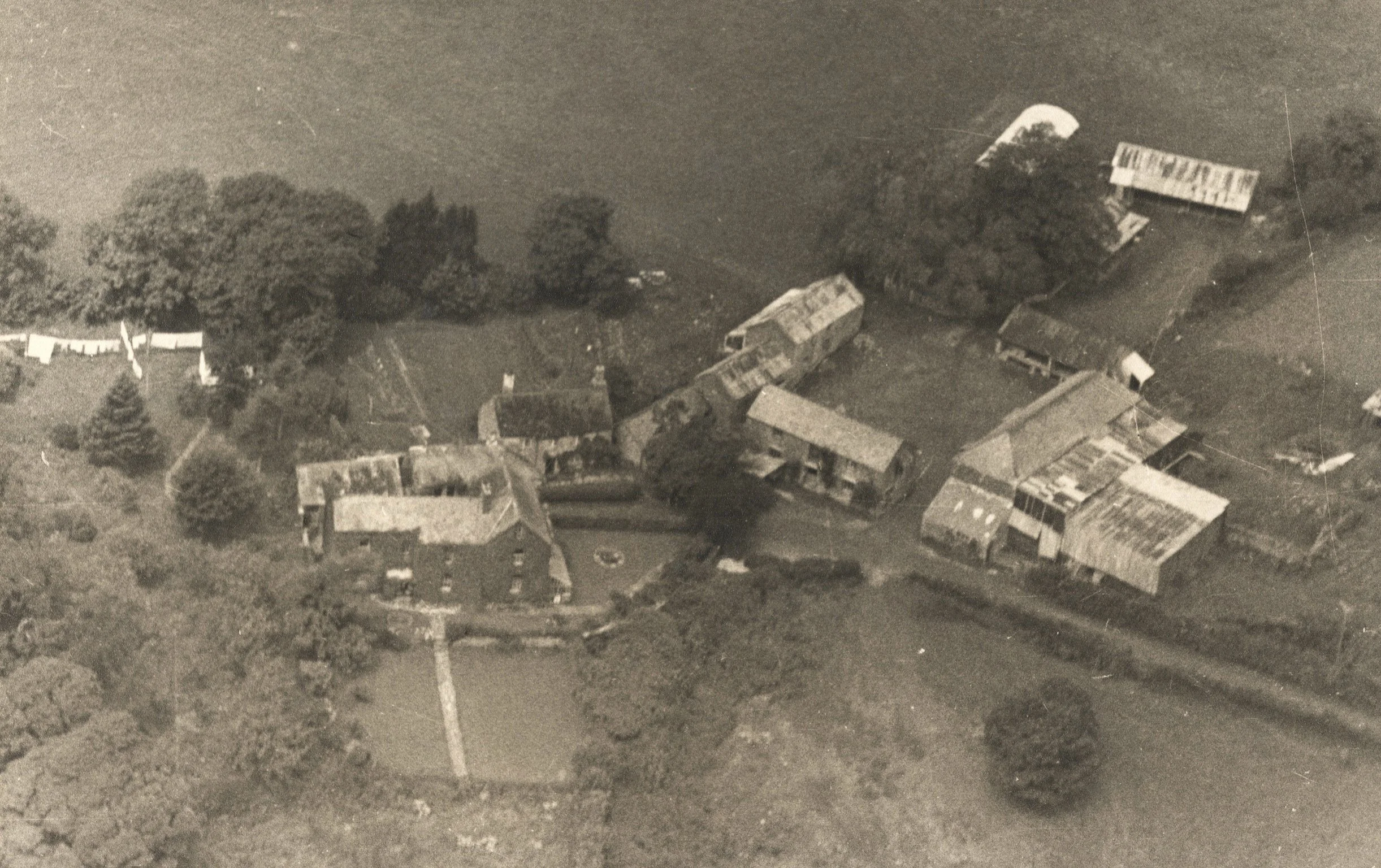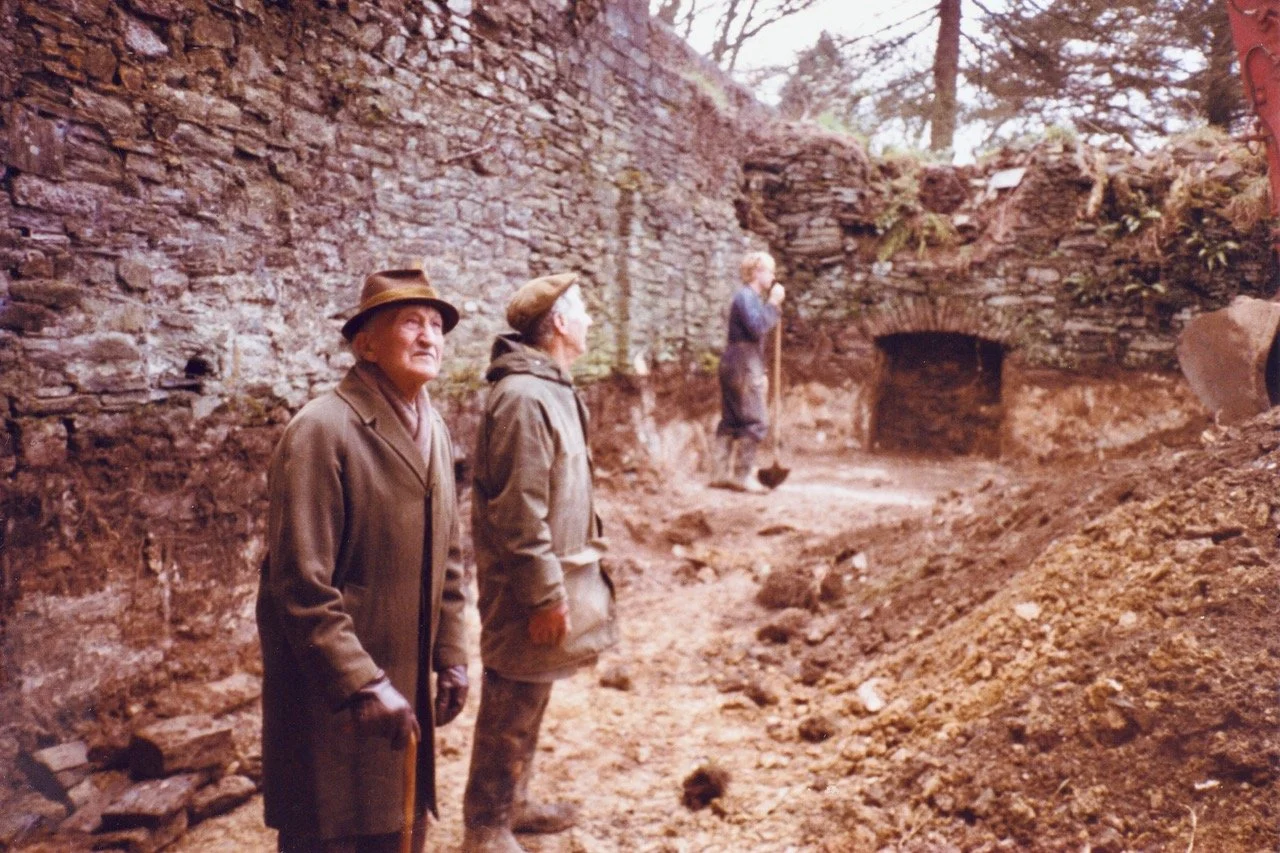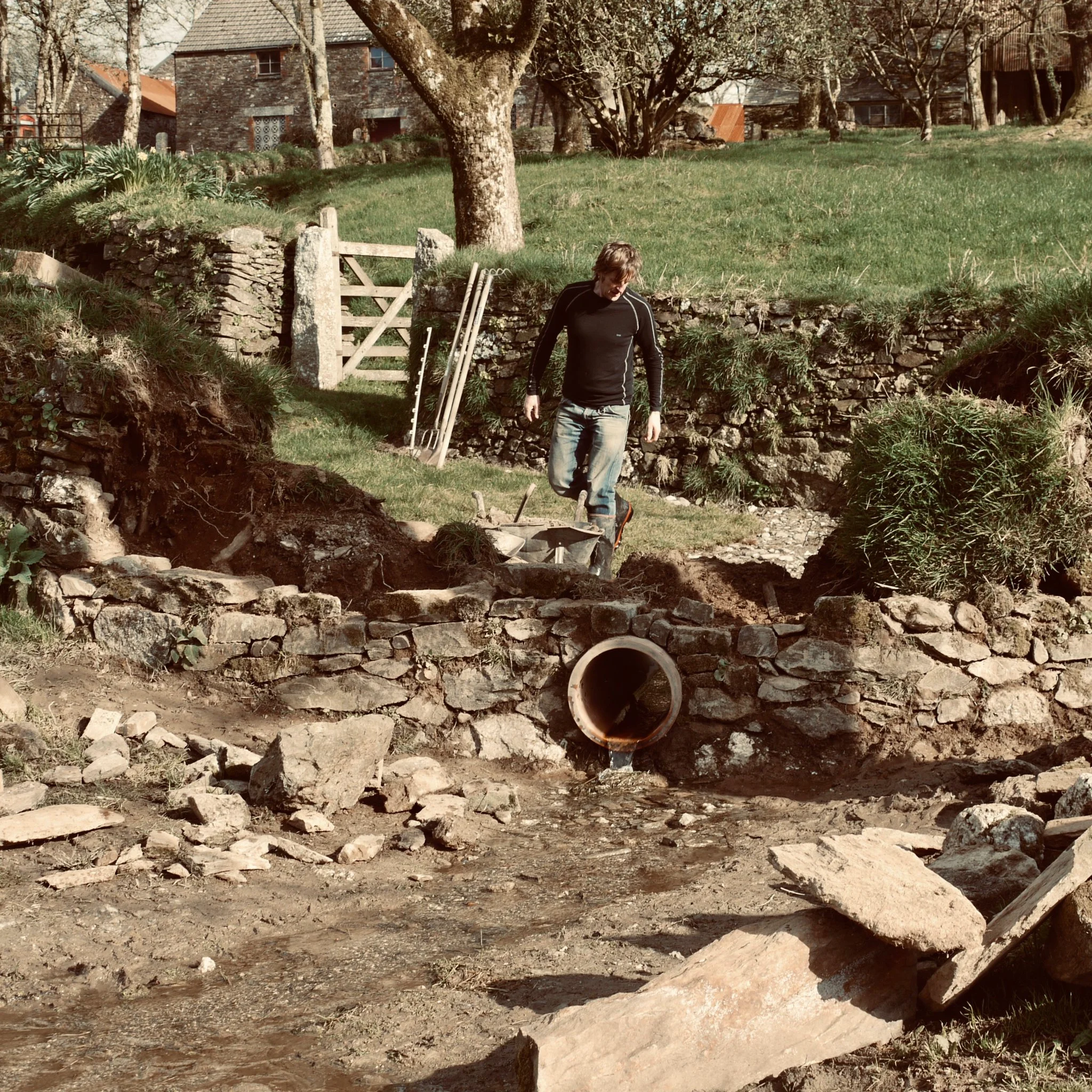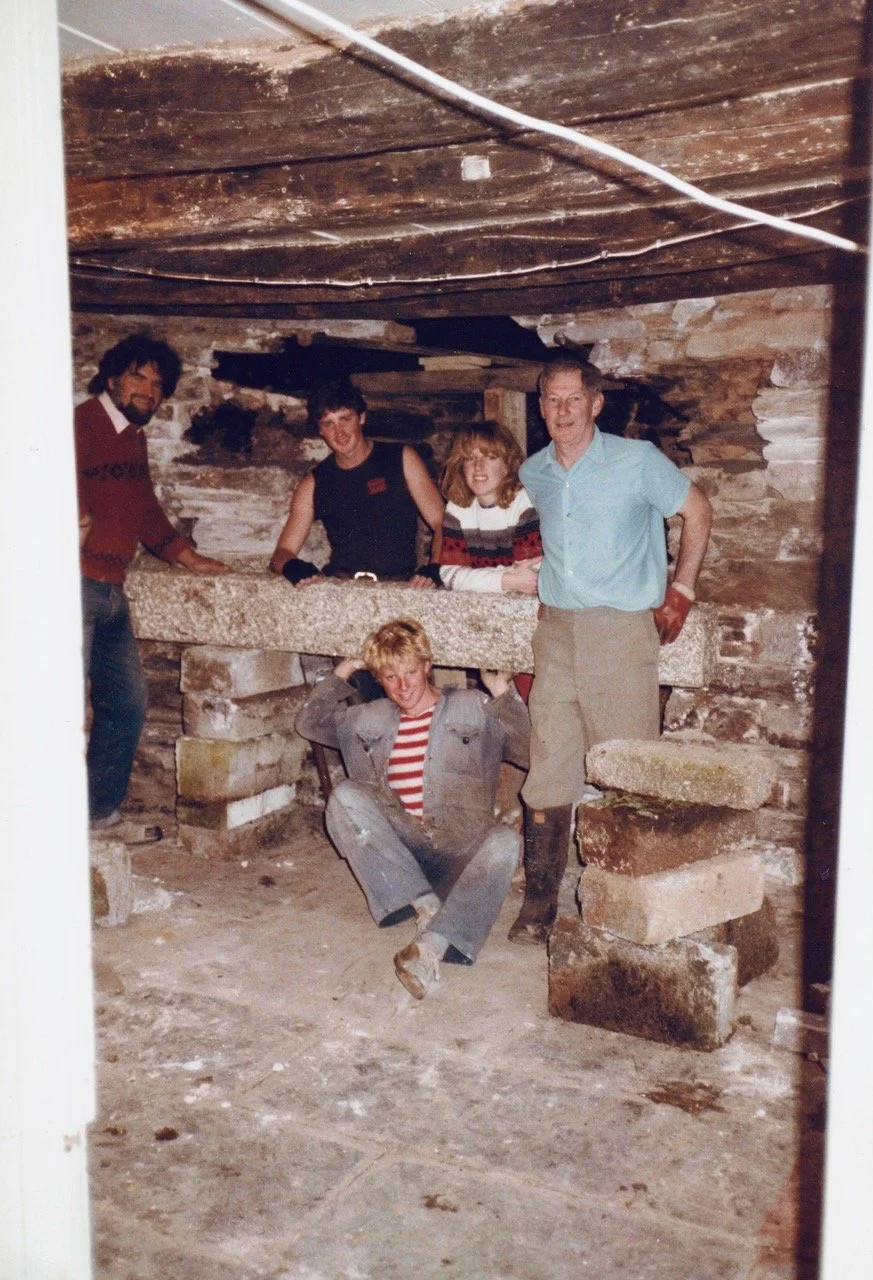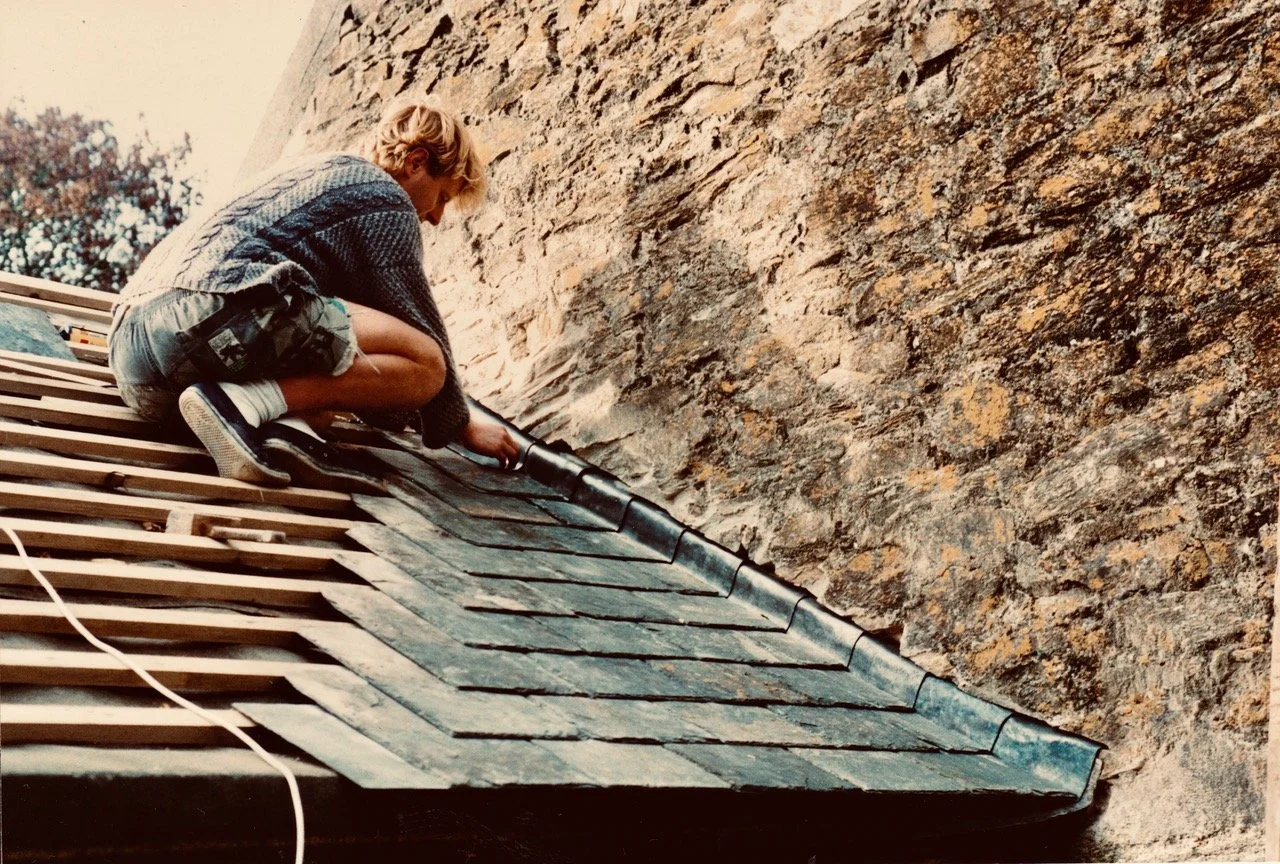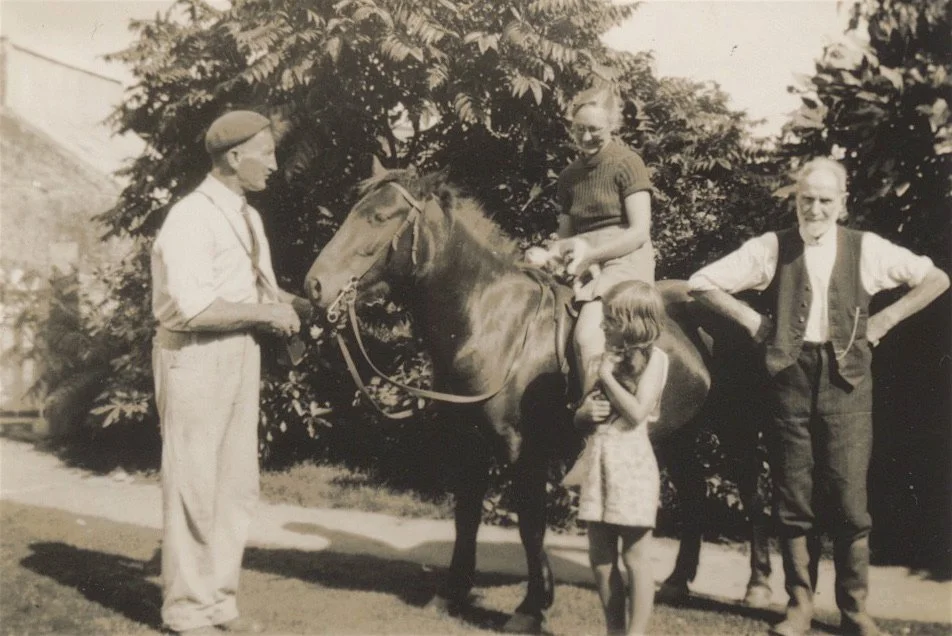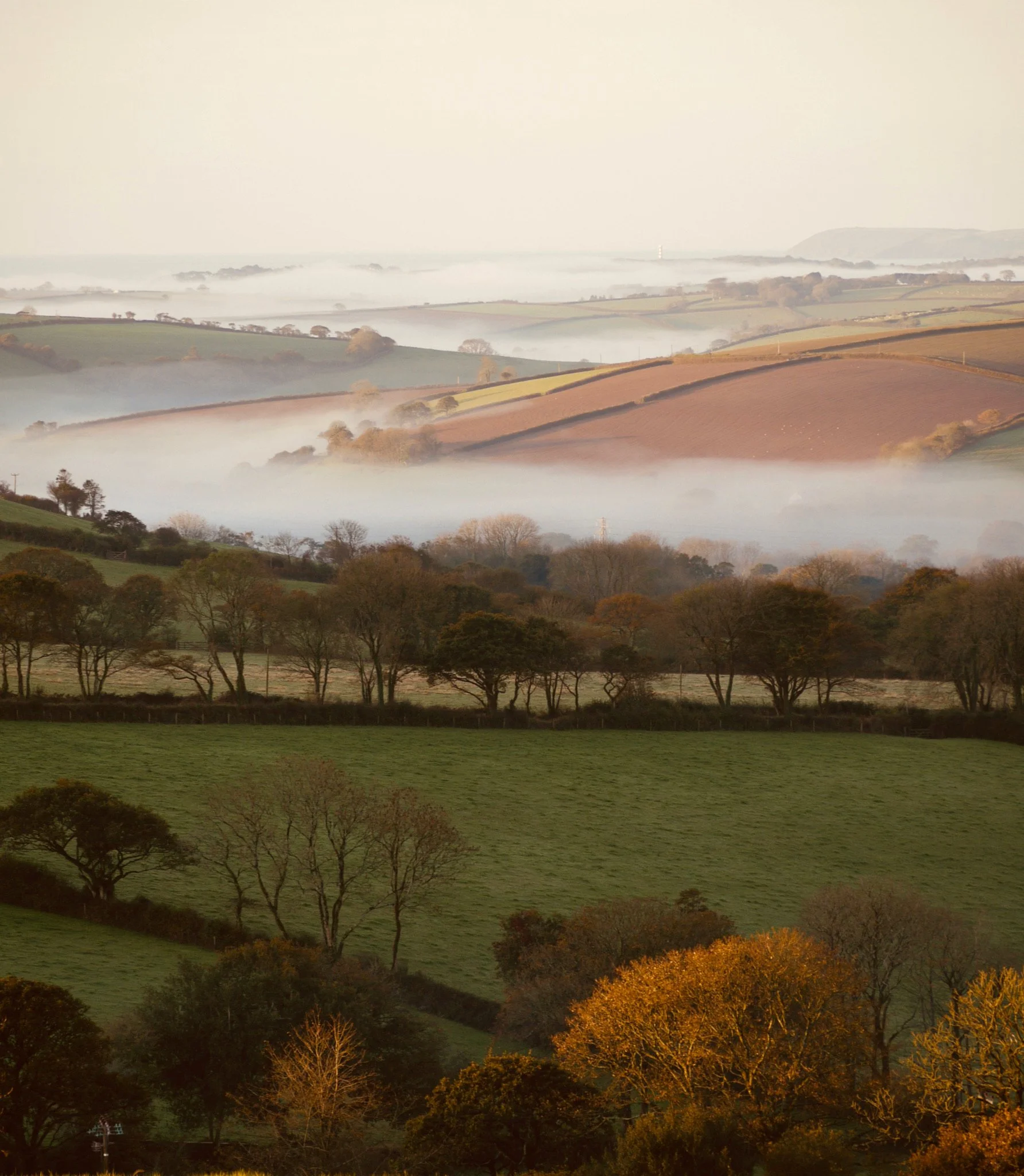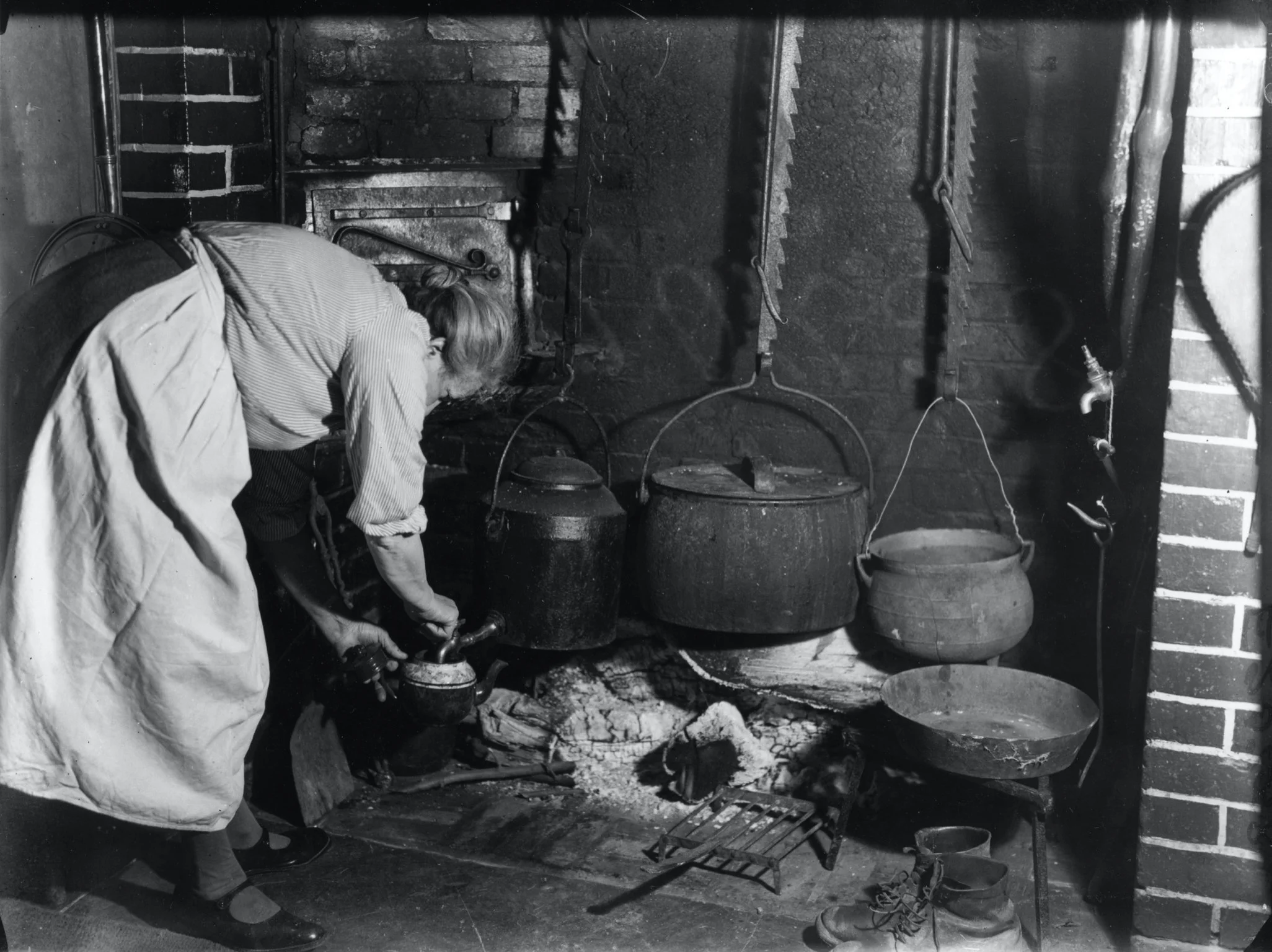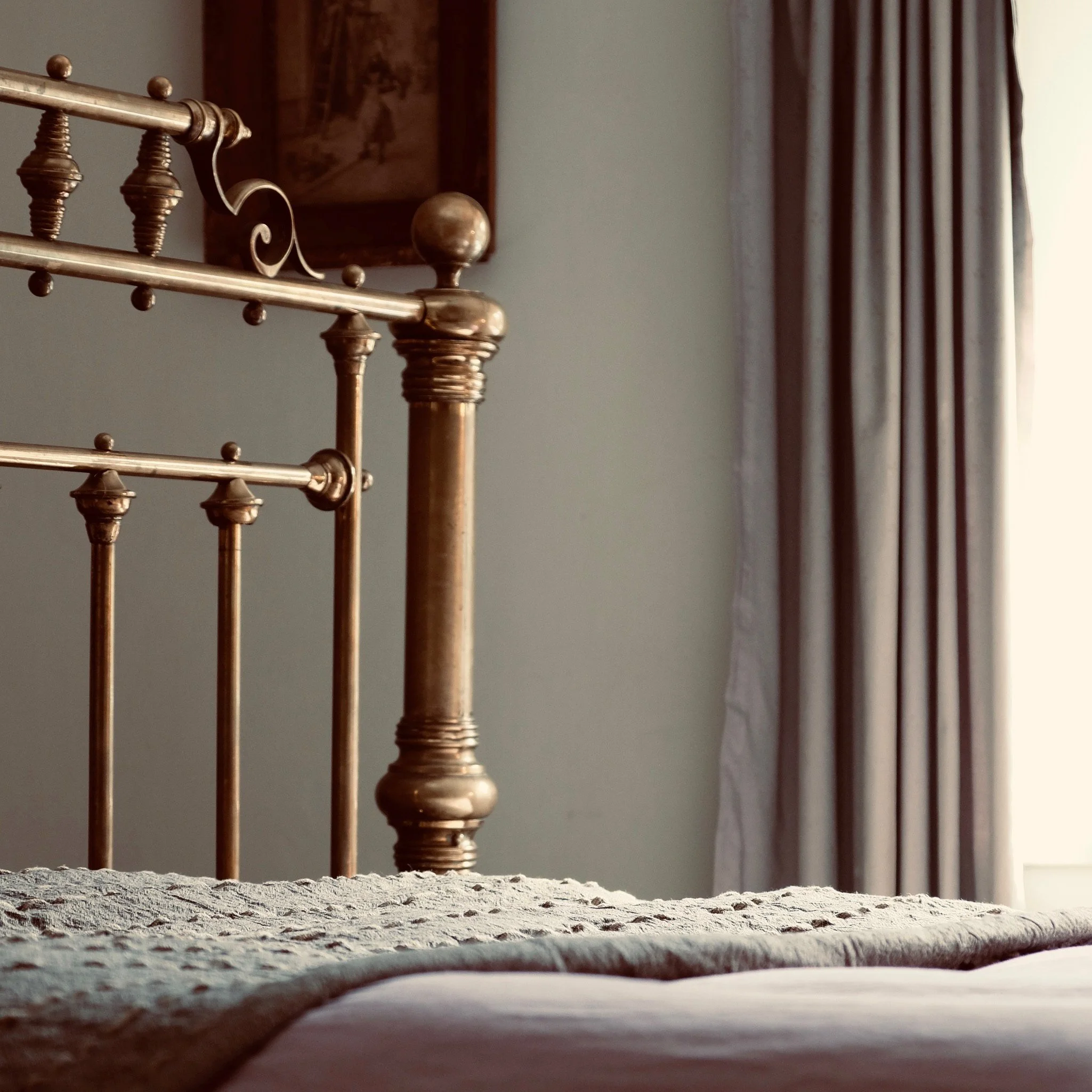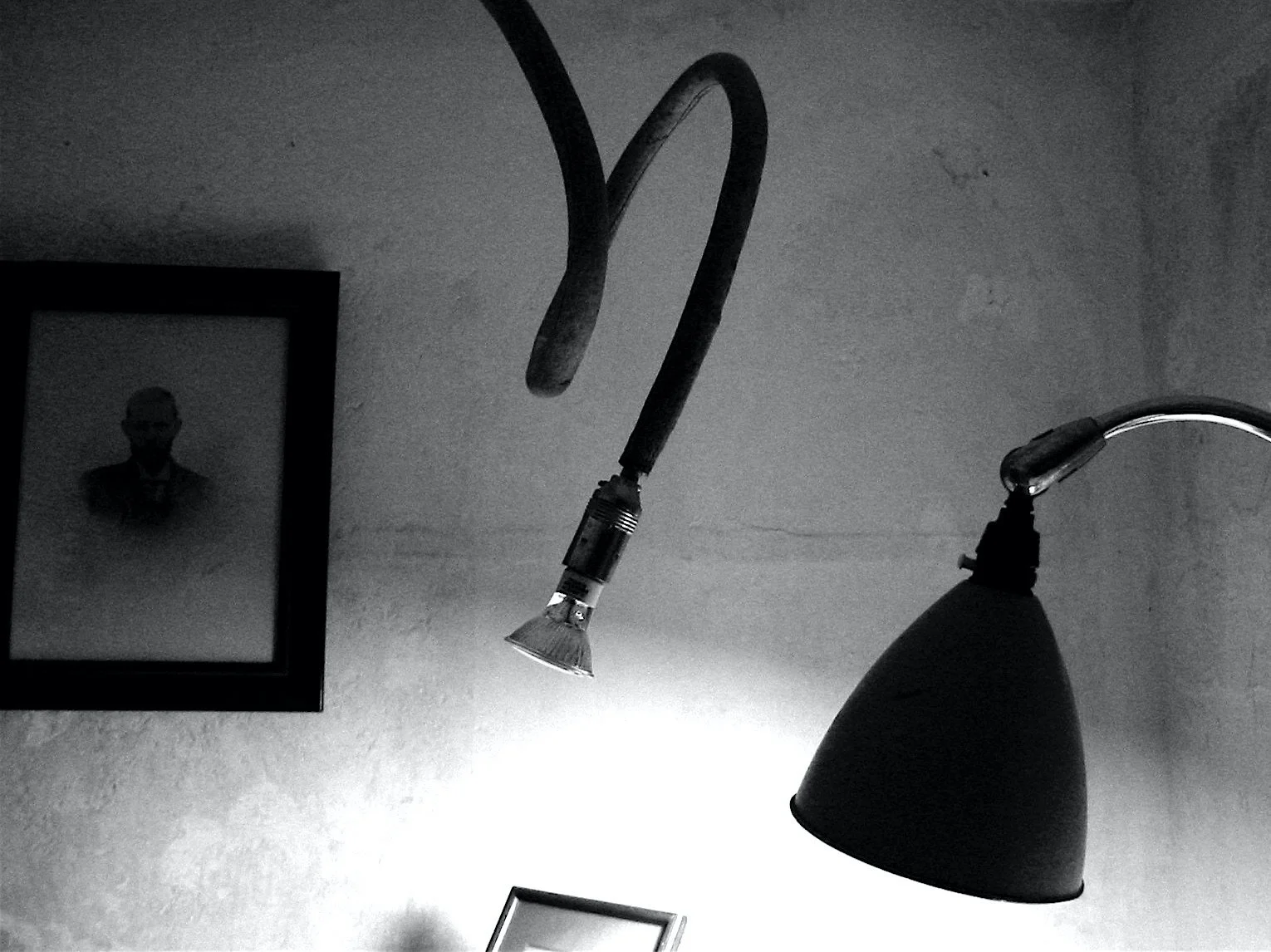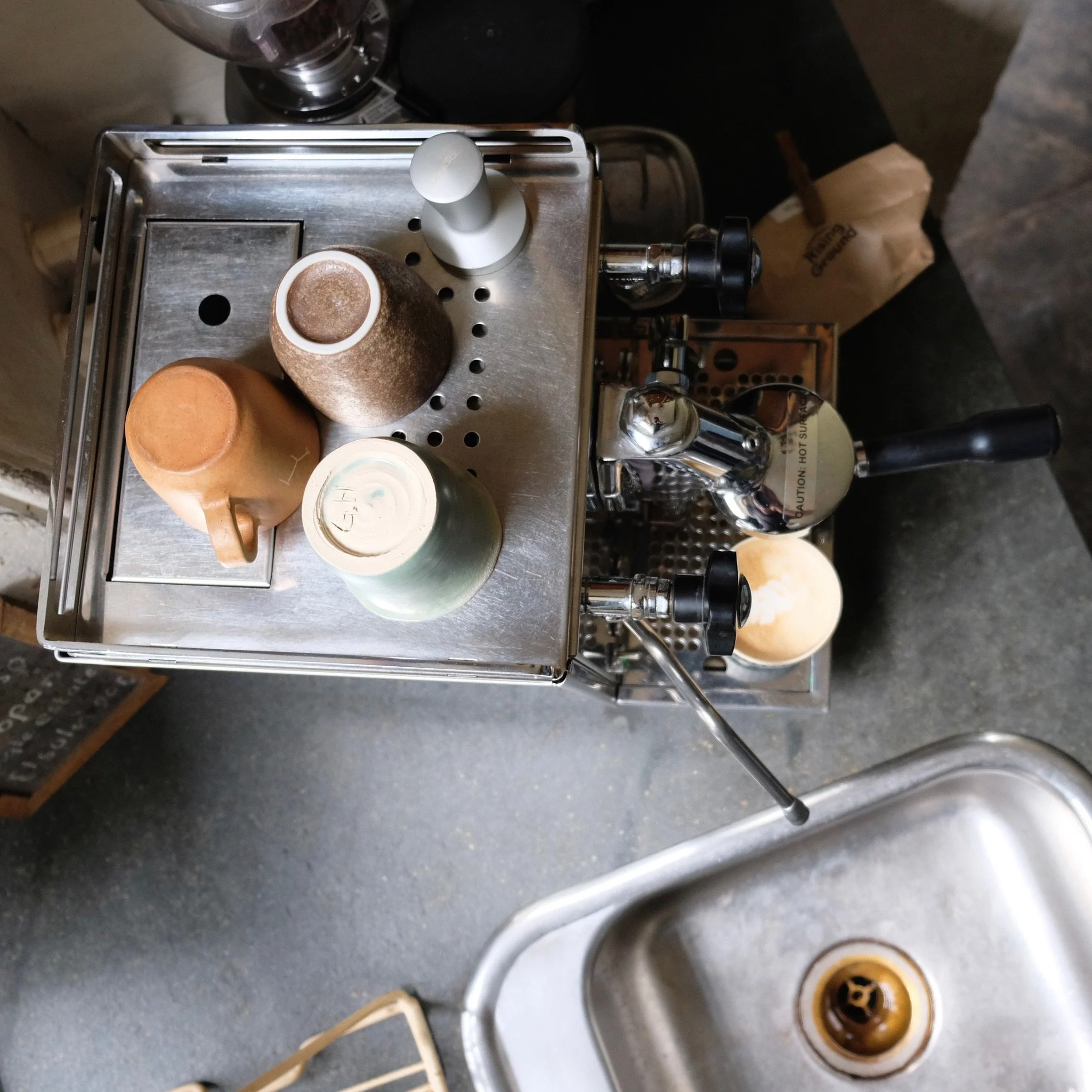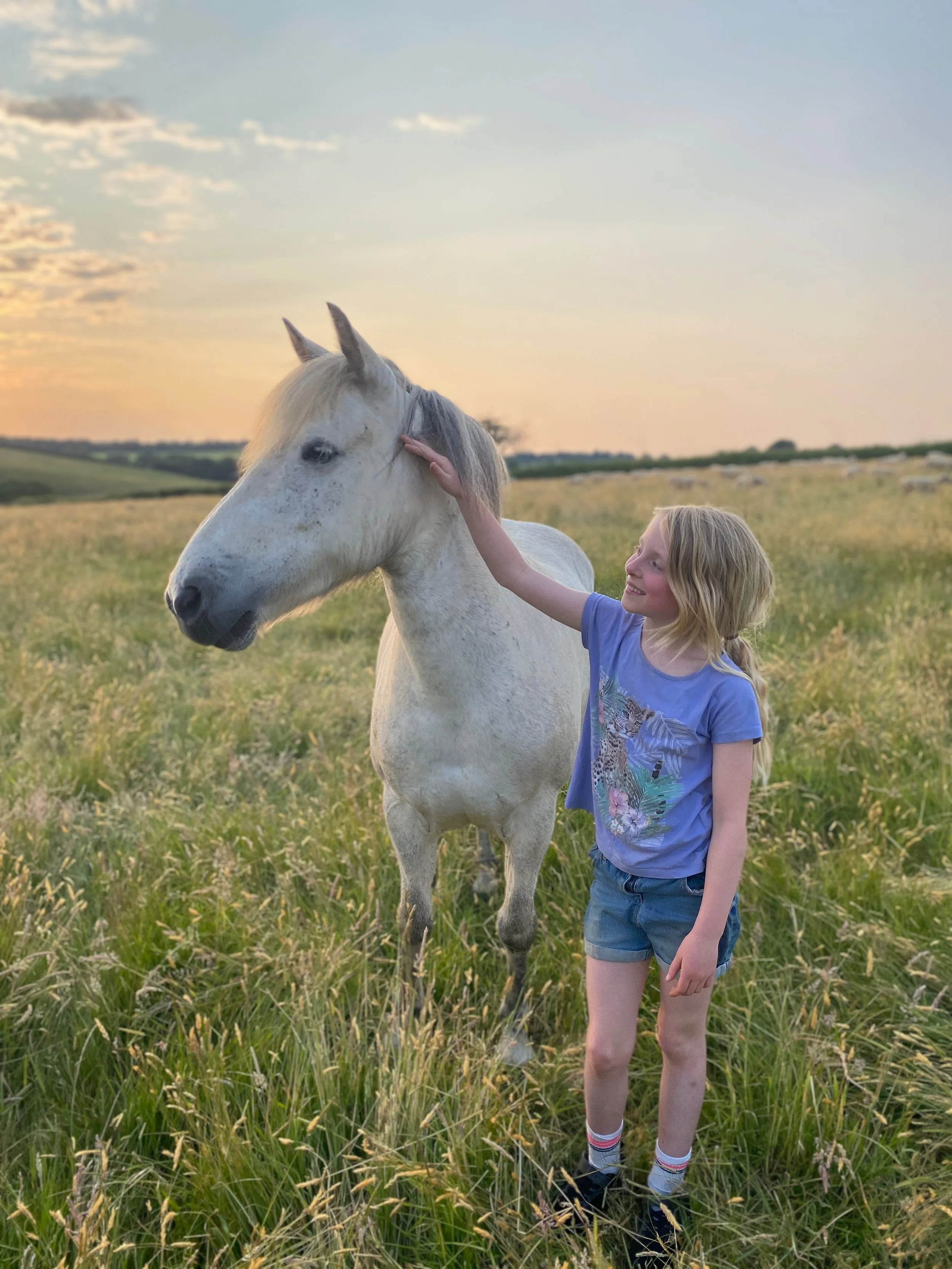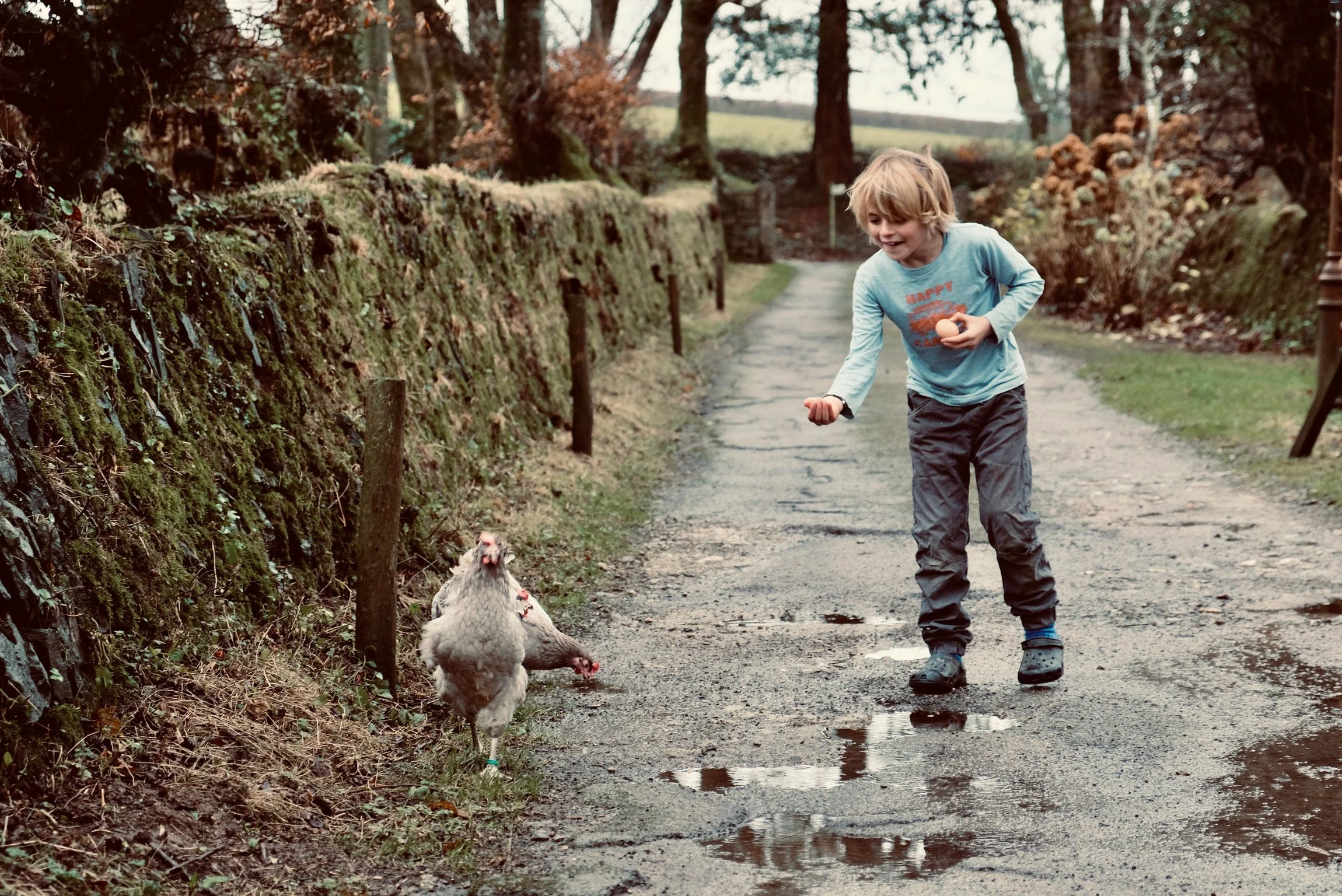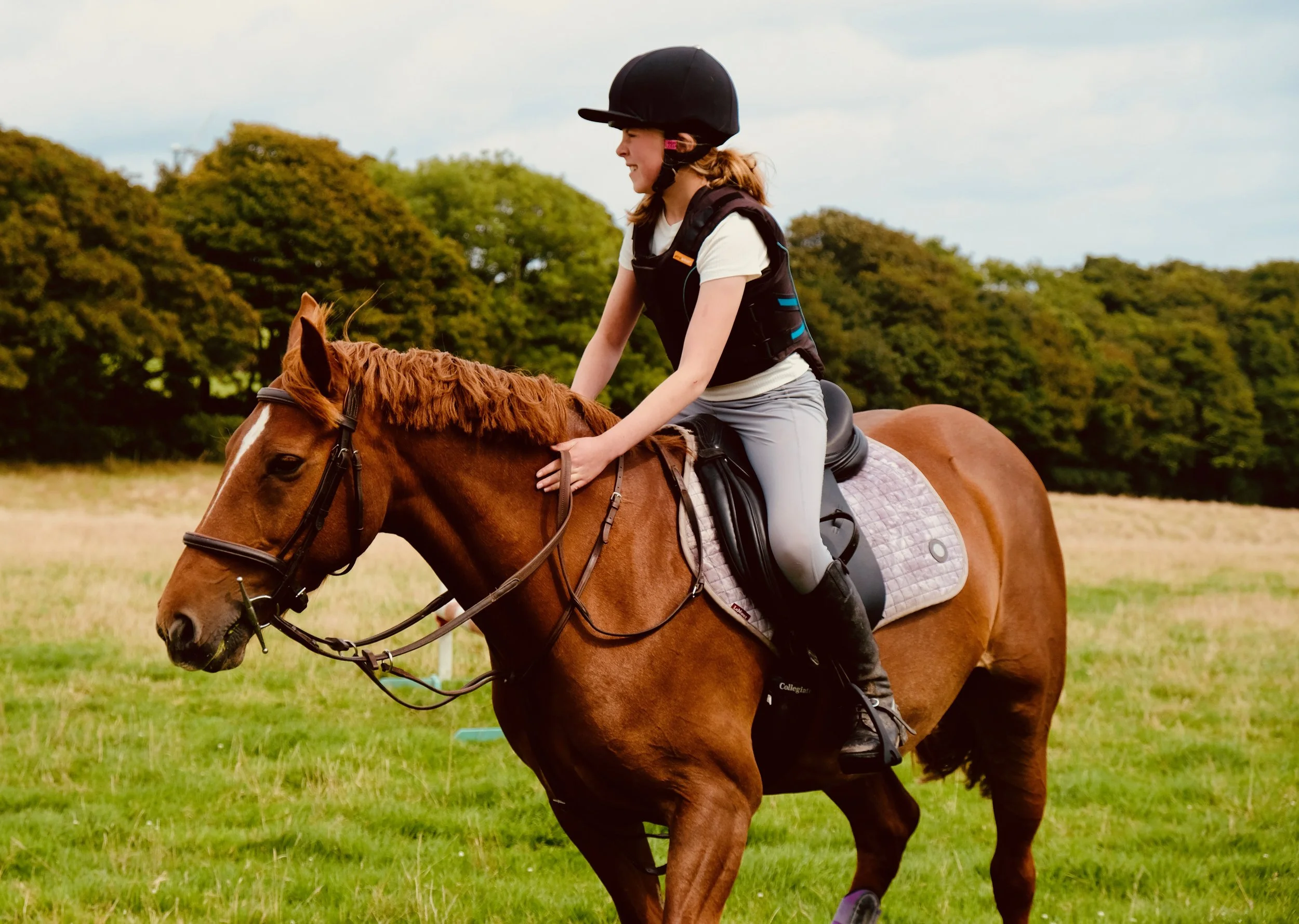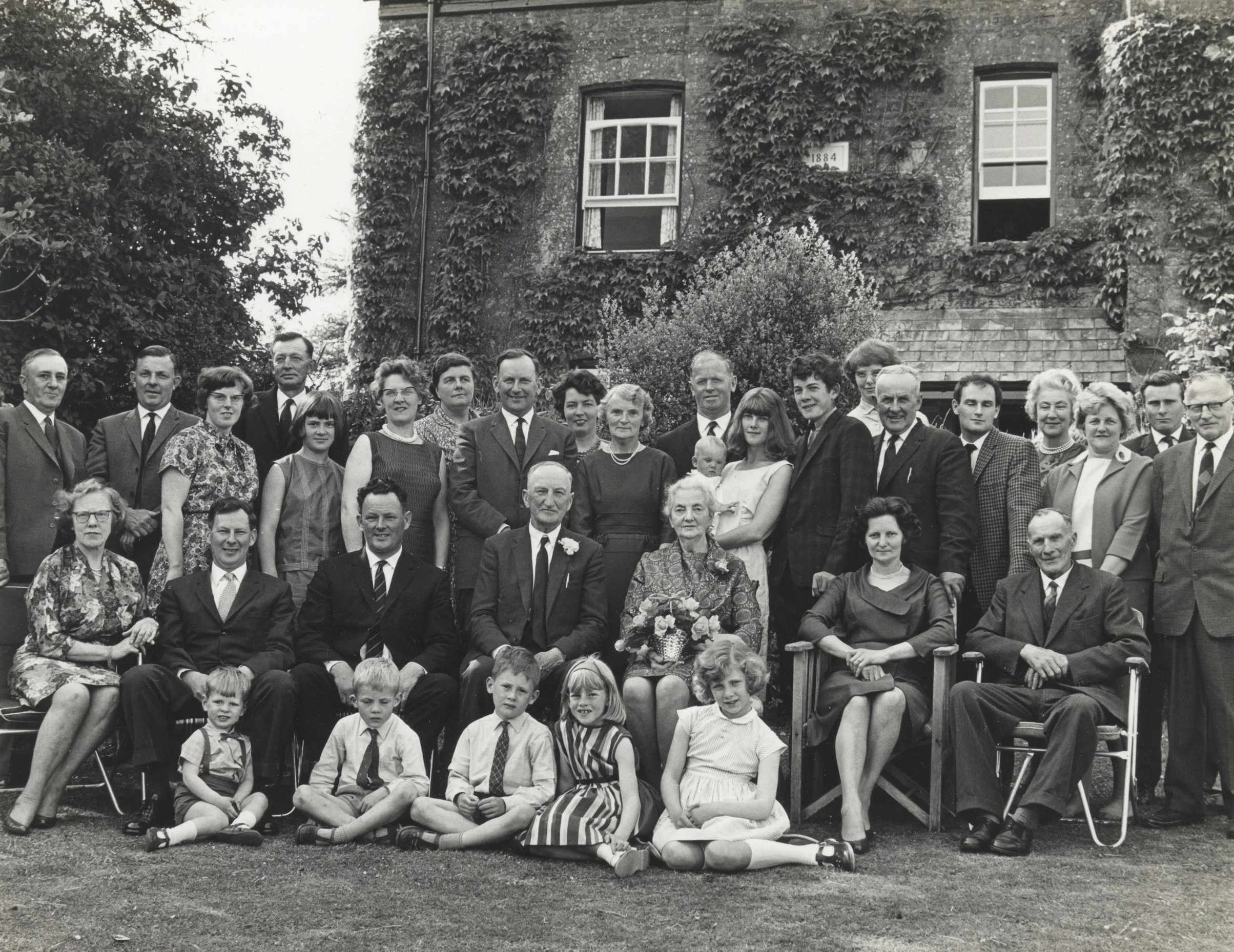About Botelet
Welcome to Botelet Farm. We hope you enjoy the stories shared below of Botelet past and present. Our family, The Tamblyns, have lived here at Botelet for around 150 years. Three generations still live here today: Barbara and daughter Julie live in one half of the farmhouse; Barbara’s son Richard, wife Tia and three young children - Cyra along with twins Otto and Nell - live in the other half. Many recent visitors to Botelet will also remember David (Barbara’s husband) who was born at Botelet in 1924 and lived here until 2018 when he died age 93 - along with his stories, his morning walk to feed the doves and chickens, and his ability to cycle backwards even in his 80s!
Here is a link to the blog David wrote, with charming anecdotes and photographs of local life: David’s blog.
Family history
David’s grandfather Thomas and his wife Elizabeth were the first Tamblyns to farm at Botelet, living in Manor Cottage as tenants of Squire Trelawney. In 1884, by the request of the current generation's great grandparents, Squire Trelawney came to inspect the condition of Botelet Manor House. When he nearly fell through the rotten floor, Squire Trelawney ordered his men to build the current farmhouse just across the cobbled courtyard.
David’s father Cyrus was born in the farmhouse in 1884, the year it was built; he lived at Botelet to the tender age of 102! Cyrus married Ella, who was from a local farming family (Turpies) and they had three children - Dudley, Eula, and David was the youngest. Barbara moved to Botelet in 1956 after her marriage to David; Barbara celebrated her 90th birthday in January 2022.
Julie enjoyed a few years of working both within Cornwall and abroad in the hospitality industry before returning to Botelet to work on the administration and housekeeping side of the letting business, along with overseeing restoration work in Hollowpark and Cowslip, and supporting work on the farm.
Richard grew up learning the idiosyncrasies of farming at Botelet from his father and grandfather, and having finished school studied Agriculture before pursuing his creative draw to buildings. A lifetime has been spent gently evolving and preserving buildings - historic and modern - here at Botelet, having travelled the world then spent time restoring properties in New Zealand and France.
Brought up on the west coast of Scotland, Tia was well used to rural living when she met Richard and moved to Botelet in 2009, and Richard and Tia married in 2013. Their daughter Cyra was born in 2012 followed by twins Nell and Otto in 2014. Formerly a teacher, Tia retrained as a massage therapist having started a family, and now works at Botelet offering therapeutic massage as well as supporting the letting and farm businesses.
Richard, Tia, Cyra, Otto & Nell 2014
Buildings
In the early 1800s there were three, possibly four cottages that made up a hamlet known as ‘Hollowparks’ and included the houses that are currently named ‘Cowslip’ and ‘Hollowpark’. A blacksmith, carpenter and their families were among the tradesmen that lived and had workshops there. The houses were part of Botelet and on the 1871 census there were 31 people recorded as living in the ‘hollow’. Later that century the various houses became homes to generations who worked on the farm.
After undergoing a few years of restoration work during which Richard cut his teeth at most building specialisms, the cottages moved from being the residents of farm workers to self-catering accommodation. Of these, Manor Cottage is at the heart of the farm, and Hollowpark and Cowslip just a short walk down the lane.
There has been a conscious decision not to convert every barn and building at Botelet, the emphasis has been on gradual restoration that respects the history of the place, using resources that have been collected and repurposed over time. As well as still requiring significant space for farming equipment, there is also a desire to celebrate the heritage of the buildings and their former use when the family were involved with animal husbandry; the barn on the right as you enter the yard is still referred to as the ‘Cow’s House’, and many visitors will also be familiar with the ‘Pig House’ - a still rustic shed in which wellbeing workshops are now held.
richard working on the pig house roof, 1980s
Farming
Farming in the early days of the Tamblyn tenure was hard-graft, without the mechanisation of modern farming but with a team of local workers, some of whom lived in the cottages. Cattle and sheep along with fodder crops were the predominant uses of the land, and horses were instrumental for pulling carts, ploughing and moving around the farm - Cyrus would daily be out on his horse Doxy as he oversaw work around the farm. You can still find some of the old metal ploughs that were pulled by horses up in the yard.
Hay harvest in cross park
cyrus (left), his father-in-law ebineezer turpiedoxy (far right), doxy (horse) & friends
The family focused on farming beef cattle along with sheep up until the 1980s, with David specialising in breeding Charolais bulls; he was the first person in Cornwall to do so. Richard and Julie grew up farming alongside their father and grandfather; but a combination of wanderlust, a deep interest in architecture, restoration and historic buildings along with increasingly challenging markets for agricultural products - especially from smaller farms - saw a shift towards diversifying into accommodation and renting the grazing out to a local tenant farmer, with much work still remaining to upkeep the land.
The majority of the cattle and sheep were sold in the late 1980s, with a shifting focus on more diverse farming activities including restoring buildings for self-catering accommodation, improving the hedgerows and fences along with historical features, and farming in a very gentle way as part of the Environmental Stewardship Scheme.
Although we are not a registered organic farm, we do not use fertilisers or pesticides on the land which means there is an abundance of wild flowers along with species of insects, birds and butterflies. We have a tenant farmer whose livestock grazes the fields. The cattle and sheep are removed during winter months when the grass isn’t growing; this allows the land to rest or ‘fallow’ and restore before livestock return in spring. The deciduous wet woodlands that form part of Botelet (to the west) are left to naturally evolve as a natural ecosystem, again holding a vast array of plant and wildlife.
Over the past 30 years much work has gone into restoring the hedgerows that cross-cut the fields and lanes here at Botelet. This is a slow process that uses century-old skills, rebuilding the walls using stones that have been collected from the fields (you will still find many of them stacked in piles in the yard!) using earth to help hold the stones together, then planting native species such as blackthorn, hawthorn, dog rose and oak on top. The hedgerows have historical significance (many were removed from local farms in the late 20th century as part of the emphasis towards larger-scale farming with bigger technology) as well as providing habitat for an incredible array of fauna and flora.
Welcoming visitors
Visitors have been welcomed to Botelet throughout the Tamblyn’s tenure. Ella (Richard and Julie’s grandmother) opened up the farmhouse for Bed and Breakfast in the 1930s. At this point in time, cooking took place on the open fire in the farmhouse kitchen, along with the clome oven (a traditional Cornish oven, built into a stone wall, used for baking including pasties).
ella tamblyn cooking in the farmhouse
In the 1950s Barbara converted an old railway wagon into a self-catering chalet, offering accommodation for families - glamping well ahead of its time! Julie and Richard still remember the excitement of being allowed into the chalet on occasion to watch ITV when only BBC was accessible in the farmhouse! The shell of the chalet is still located behind Manor Cottage garden.
inside barbara’s chalet, 1950s
Richard along with his previous partner Helen re-started B&B in the farmhouse in the 1990s and ran this successfully for a decade, with Helen offering exquisite dinners accompanied by Richard’s infamous wine-list.
The offering at Botelet is constantly evolving: B&B ended as Richard and Tia needed space in the farmhouse for their growing family, and from there Botelet Breakfast Club was born and ran through until Covid forced closure; there have been decades of wild camping and yurt stays; and we shift things gently in response to changes in family life.
What remains constant is the focus on timeless, functional restoration and design.
Present & future …
Today’s visitors to Botelet will get a feel for the current generation of children’s passions! Cyra and Nell are horse-mad and you may well see them out and about on their ponies Amber and Indie. Otto loves helping Richard on the farm, and is very attached to his brood of free roaming chickens. Otto has eggs (and sometimes jam) for sale in his little shop outside the farmhouse.
Botelet continues to be a place that extended family and friends return to, holding special memories and creating many more.
We hope you enjoy sharing a slice of farm life with us during your stay.
tamblyn family, 3rd June 1965 on the occasion of Cyrus and ella’s golden wedding anniversary
Back row L to R: Fernley martin, jim jeffery, gordon pearce, noreen martin, elizabeth tamblyn, jack mitchell, eva mitchell, mike scantlebury, may tamblyn, lawson tamblyn
second row: barbara tamblyn, susan tamblyn, lilian tamblyn, bernard tamblyn, muriel pearce, carolyn & Neale scantlebury, anthony tuckett, pat tuckett, pat jeffery, william tamblyn
third row seated: geraldine turner, david tamblyn, dudley tamblyn, cyrus tamblyn, ella tamblyn, eula tuckett, ernest tamblyn
Front row: richard tamblyn, robert tamblyn, francis tamblyn, julie tamblyn, sally tuckett
david’s diary entry from 3rd June 1965. david kept a diary from age 21 until a couple of years before he died.
